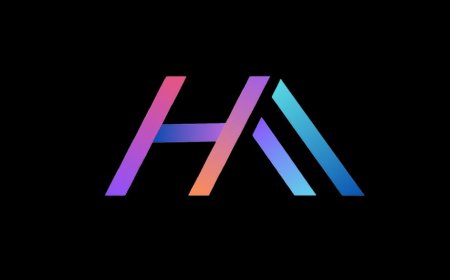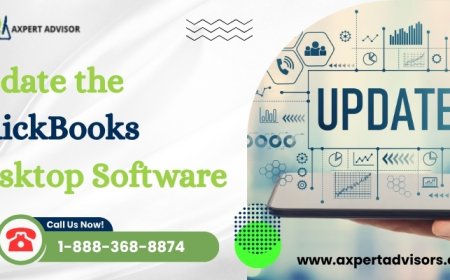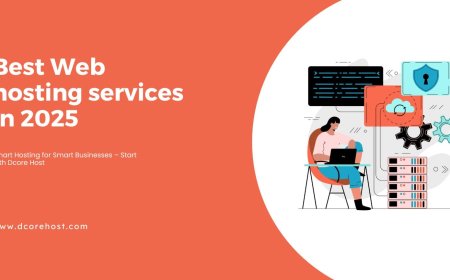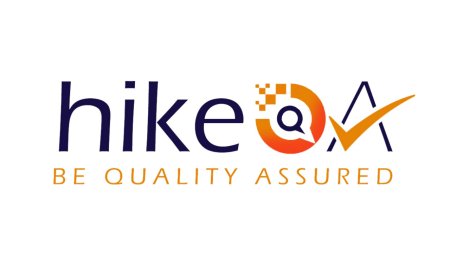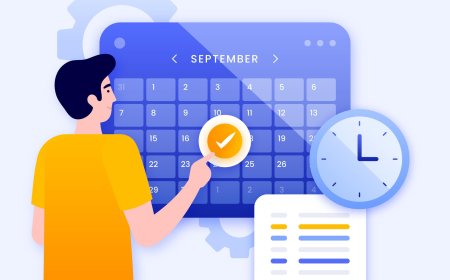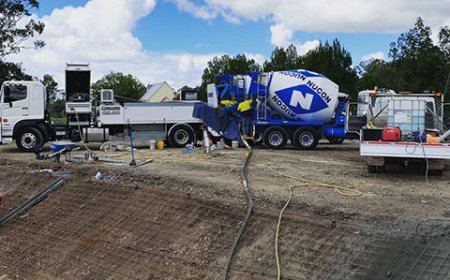Supercharge Your Apps: Flutter's Ascent in 2025
Unlock app potential in 2025 with Flutter. Discover how its speed, cost-effectiveness, and cross-platform power revolutionize mobile app development.

The mobile app landscape is relentlessly dynamic, with user expectations for seamless performance and stunning aesthetics reaching new heights. In this ever-evolving arena, one framework has consistently risen to prominence, proving its mettle for developers and businesses alike: Flutter. As we navigate 2025, Flutter isn't just a viable option for mobile app development; it's a strategic imperative for organizations aiming for efficiency, speed, and cross-platform excellence.
This article delves into why Flutter is the framework of choice for modern app development, highlighting its benefits for CTOs, product managers, and business owners. We'll explore its technical prowess, cost-effectiveness, and the burgeoning ecosystem that ensures its long-term viability.
The Flutter Advantage: A Symphony of Speed & Simplicity
Flutter, Google's open-source UI toolkit, continues to redefine cross-platform development. Its fundamental strength lies in its ability to build natively compiled applications for mobile, web, and desktop from a single codebase. This "write once, run anywhere" philosophy translates into significant advantages for development teams.
At its core, Flutter leverages the Dart programming language, which compiles into native code, ensuring blazing-fast performance that often rivals native applications. This bypasses the need for a JavaScript bridge, a common bottleneck in other cross-platform frameworks. The result is a smooth, fluid user experience with high frame rates and quick startup times, crucial for retaining user engagement in today's competitive app market. This efficiency is a core reason why Flutter mobile app development is gaining such significant traction.
Pixel-Perfect Precision: Crafting Unforgettable User Experiences
One of Flutter's most compelling features is its rich set of customizable widgets. Unlike other frameworks that rely on OEM widgets, Flutter renders its UI directly using its own Skia graphics engine. This empowers developers to create highly expressive and visually consistent UIs across all platforms, ensuring a pixel-perfect design that truly reflects brand identity.
This level of control over the UI is invaluable for businesses that prioritize a unique and engaging user experience. From intricate animations to bespoke layouts, Flutter provides the tools to bring any design vision to life without compromising on performance. According to a 2025 study by the Flutter community, while Flutter's startup time and memory usage might trail native apps slightly, its cross-platform efficiency and rapid development cycle often outweigh these minor differences for most applications, especially when aiming for a consistent visual identity.
The Economic Edge: Cost-Effectiveness and Accelerated Time-to-Market
For CTOs and business owners, the financial implications of app development are paramount. Flutter delivers substantial cost savings by eliminating the need for separate iOS and Android development teams. A single team can develop and maintain a single codebase, leading to a significant reduction in development time and resources.
-
Reduced Development Costs: Reports indicate that Flutter's single codebase architecture can cut development costs by 40-60% compared to native app development. This is a game-changer for startups and enterprises alike.
-
Faster Time-to-Market: Flutter's "hot reload" feature is a developer's dream. It allows for instant visualization of code changes, dramatically accelerating the iteration process. This rapid prototyping capability means businesses can launch Minimum Viable Products (MVPs) much faster, gather user feedback, and iterate quickly. For instance, the 2024 App Development Benchmark Report by Clutch found that for complex applications (6+ months), Flutter projects showed 9% better adherence to estimated timelines. This efficiency directly translates to getting your product into users' hands sooner, gaining a competitive edge.
-
Simplified Maintenance: With a unified codebase, ongoing maintenance and bug fixes become far more streamlined. Instead of addressing issues across two distinct codebases, developers can fix problems once and deploy the solution across all platforms, further reducing operational expenses.
When you hire Flutter app developers, you're not just investing in a technology; you're investing in a methodology that inherently drives down costs and speeds up delivery.
Expert Voices & Consensus: What Industry Leaders Are Saying
The industry's embrace of Flutter is undeniable, with thought leaders and industry reports consistently highlighting its growing influence.
"Flutter remains the top cross-platform app development option with its rapid development cycle, rich widget set, and strong support community," states a 2025 analysis by OS-System. "Being Google's sponsored solution, Flutter is still being provided with updates on a regular basis, which favors stability and innovations." This ongoing commitment from Google ensures Flutter's continued evolution and relevance.
Julia Lozanov, Chief Editor at Verpex, notes a unique trend: "The rise of Foldable and Multi-Display Support... allows developers to create apps that seamlessly adapt to various screen sizes and foldable devices. It's a game-changer for businesses, as they can now create immersive experiences that engage users across different devices." This adaptability makes Flutter a future-proof choice as mobile hardware continues to diversify.
Real-world success stories further underscore Flutter's business adaptability. Giants like Google Pay, BMW, and Alibaba have successfully leveraged Flutter to build stunning, high-performance applications that operate seamlessly across both iOS and Android. This demonstrates Flutter's capability to handle complex enterprise-level applications with demanding performance and security requirements. For example, Flutter is increasingly adopted in the FinTech sector, with 37% of fintech applications reportedly using Flutter, showcasing its suitability for industries with stringent demands.
Beyond Mobile: Flutter's Multi-Platform Horizons
While Flutter initially gained traction for Flutter mobile app development, its vision extends far beyond. In 2025, Flutter is a robust solution for building applications across an expanding array of platforms:
-
Web Applications: Flutter for Web has matured significantly, offering near-native performance for many use cases. This allows businesses to maintain a consistent brand experience across web and mobile, further consolidating development efforts.
-
Desktop Applications: Flutter provides stable support for desktop applications on Windows, macOS, and Linux, enabling truly universal applications from a single codebase. This is particularly beneficial for businesses looking to expand their reach to desktop users without incurring additional development overhead.
-
Embedded Systems & IoT: Flutter's lightweight UI and efficient rendering make it an increasingly promising tool for embedded and IoT applications, such as smart home devices and automotive dashboards. This opens up new avenues for businesses to innovate and create integrated experiences.
The ability to target multiple platforms from a single codebase is a significant strategic advantage, future-proofing your investment and maximizing your development team's efficiency. When you hire Flutter app developers, you're gaining access to a skillset that transcends traditional mobile boundaries.
Navigating the Future: Actionable Insights for Decision-Makers
For CTOs, product managers, and business owners considering Flutter for long-term use, here are some actionable recommendations:
-
Prioritize a Strong Architecture: While Flutter facilitates rapid development, investing in a robust and scalable architecture from the outset is crucial for long-term maintainability. Embrace best practices for state management (e.g., Provider, Riverpod, Bloc) and clean code principles.
-
Leverage the Ecosystem: Flutter boasts a vibrant and growing ecosystem of packages and plugins on Pub.dev. Explore these resources to accelerate development and integrate functionalities like analytics, payments, and authentication.
-
Focus on Performance Optimization: Even with Flutter's inherent performance advantages, continuous optimization is key. Employ techniques like lazy loading, image caching, and efficient widget management to ensure your app remains performant as it scales. Tools like Flutter DevTools are invaluable for profiling and debugging.
-
Consider Gradual Integration: For businesses with existing native applications, Flutter offers an incremental adoption path. You can integrate Flutter modules for specific features or screens without rewriting your entire legacy system, allowing for a phased transition and minimizing disruption.
Frequently Asked Questions (FAQ) about Flutter in 2025
Q1: Is Flutter still a good choice for mobile app development in 2025? Absolutely. Backed by Google's continuous investment, a thriving community, and its inherent advantages in performance, cross-platform capability, and cost-effectiveness, Flutter remains a leading choice for mobile app development in 2025 and beyond.
Q2: How does Flutter compare to React Native in 2025? In 2025, both Flutter and React Native remain strong contenders. Flutter often excels in performance and UI consistency due to its custom rendering engine, making it ideal for visually rich applications. React Native, leveraging JavaScript expertise, offers advantages for teams already proficient in that language. According to Statista, Flutter's popularity has been steadily rising, with 46% of developers worldwide favoring Flutter for cross-platform development, making it the most favored framework in 2025.
Q3: What kind of applications is Flutter best suited for? Flutter is highly versatile. It's an excellent choice for:
-
MVPs (Minimum Viable Products) due to its rapid development cycle.
-
Applications requiring a highly custom and consistent UI across platforms.
-
Performance-intensive apps with complex animations.
-
Apps targeting multiple platforms (mobile, web, desktop, embedded).
-
Fintech, e-commerce, and healthcare applications, given its proven track record in these sectors.
Q4: What are the typical costs involved in Flutter app development in 2025? The cost of Flutter app development varies based on complexity, features, and developer location/expertise. Simple MVP apps might range from $15,000 to $30,000, while complex enterprise solutions can exceed $100,000. Hiring Flutter app developers from regions like India can offer significant cost savings, with hourly rates typically ranging from $15-$50.
The Road Ahead: Embracing Flutter's Potential
As we look to the future, Flutter stands as a beacon of innovation in the mobile app development sphere. Its continued evolution, strong community support, and Google's unwavering commitment position it as a powerful tool for businesses seeking to build high-quality, performant, and cost-effective applications for a multi-platform world. The time to upgrade your mobile app development strategy with Flutter is now.



















